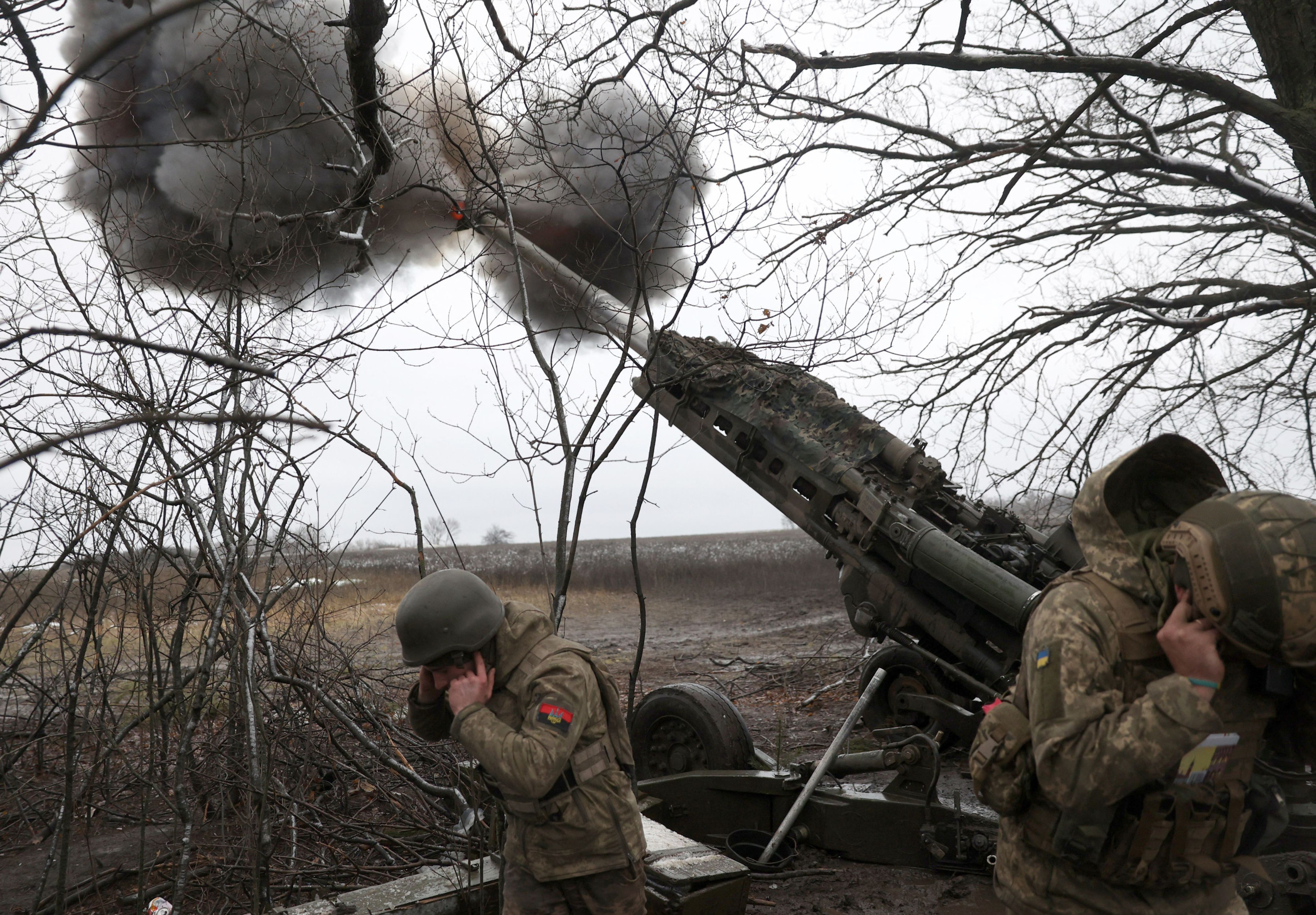WORLD
U.S. Weapons Causing 'Heavy' Russian Losses Amid Artillery Duels: Commander
BY
DAVID BRENNAN AND
YEVGENY KUKLYCHEV ON 12/16/22 AT 9:09 AM EST
Ukrainian and Russian forces have reverted to punishing artillery duels across much of the front line as both sides wait for frozen ground that is expected to open a new window for fresh
mechanized offensives.
As in the summer, both sides are facing intense ammunition pressures as artillery teams seek and destroy their rivals. Ukraine is in a unique bind; struggling to refill its stocks of Soviet-made 152mm caliber shells, while also trying to integrate a smorgasbord of
NATO-donated artillery systems that largely fire 155mm munitions.
Weapons including the U.S.-made M142 High Mobility Artillery Rocket System and its British and German counterparts; the American M777; the French Caesar; the Polish AHS Krab; and the German PzH 2000 are all now in regular use along the front.
Western systems and shells, one commander fighting on the southern front told
Newsweek, have been instrumental in helping the Ukrainians inflict
serious casualties on the invaders and erode their ability to defend occupied positions.
"The HIMARS have been a game changer over the summer period," explained Roman Kostenko—one of the famous "cyborg" Ukrainian troops who defended Donetsk airport in 2014, a veteran of the years-long fight against Russian-directed forces in the Donbas and now a member of Ukraine's parliament.
"Lately, the high-caliber stuff has been hugely helpful: the Excalibur, in particular, the 155mm, has shown itself to be very effective, destroying vehicles from a distance and dealing
heavy losses to the enemy," Kostenko added, referring to the GPS-guided U.S.-made shell.
But Ukraine—hoping to launch fresh counter-offensives
through winter while also guarding against new
Russian operations—is in constant need of new arms, said Kostenko, who noted that his portion of the southern front around Kherson is under regular Russian artillery and air strikes.
"The main issue for us is securing the necessary resources, including weapons and ammo, because the fact is the Russians still have a huge advantage in terms of vehicles, missiles and ammo, even as our Western allies continue to provide support," he explained.
Winter Arms Race
Artillery is a particularly pressing need. Ukraine has been lobbying partner nations to send more 152mm shells while also opening new domestic supply lines. But systemic limitations on production will take time to remove.
In countries like Poland, Bulgaria, Romania, and the Czech Republic, "there are certain existing production lines that have certain capacities, even if you let people work on the weekends and pay them through," Gustav Gressel—a senior policy fellow at the European Council on Foreign Relations—told
Newsweek.
"The defense industries in these countries were basically producing shells for domestic consumption and a bit for exports. But not to sustain an army as large as the Ukrainian one in a full-scale war against a mobilized Russian army."
The supply of
NATO shells is now up and running, Gressel said, but complicated by the array of systems now in Ukrainian hands. Not all 155mm systems can fire the same ammunition at the same rate, he explained, with the German PzH 2000 for example known for its sensitivity to heavy use.
The number of 155mm shells available is smaller than the 152mm, Gressel said, though somewhat compensated for by the precision of the more modern Western munitions. "They are actually quite happy with what they got from NATO," he said.
Tank rounds, Gressel added, are also vital, with the Ukrainians running low on 125mm ammunition to support the kind of mechanized advances that could seize momentum through winter into spring.
Ammunition is a problem for both sides. Russian guns appear to be firing less intensely than they were through the grinding summer offensive, an indication—Gressel said—that Moscow is seeking to conserve some resources to "stretch the stock."
The Kremlin has been receiving shells from Belarus and reportedly lobbying North Korea and Iran to help replenish its warehouses. Colonel Margo Grosberg, the head of the Estonian Defense Forces intelligence center, said this week Russia has used up around two-thirds of its overall ammunition stockpile.
Regardless of their well-documented logistics issues, Kostenko said, the Russians remain a potent threat committed to holding the line.
"If the Russians fully dig in and turn on the defensive, they will be very hard to kick out," Kostenko said. "So the type and quality of the military aid we receive really matters. Short range,
long range, tanks, artillery; you name it,
we need more."
"If we get it, we will finish the war. We have our eyes set on the victory, because we have nowhere to retreat. But you can't beat a well-resourced enemy like that with bare hands."




